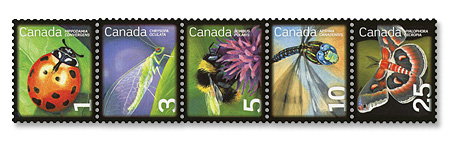Monitoring data reveal significant changes in the number of meadow birds in the Netherlands. The overall yearly decline has nearly quadrupled in recent years, i.e. from 1.2% in 1990-2000 to 4.6% since 2000. All meadow birds in the monitoring scheme (Skylark Alauda arvensis, Northern Shoveler Anas clypeata, Yellow Wagtail Motacilla flava, Oystercatcher Haematopus ostralegus, Black-tailed Godwit Limosa limosa, Northern Lapwing Vanellus vanellus, Common Redshank Tringa totanus, Meadow Pipit Anthus pratensis en Tufted Duck Aythya fuligula) are declining since 2000. Songbirds like Skylark, Meadow Pipit and Yellow Wagtail declined up to 30% from year to year in some regions which may lead to a population drop of 75% in only five years. Particularly alarming is the steep decline of meadow birds in the western peat land of the Netherlands (with an overall annual decline of 13% since 2000). The bird decline observed since the nineties correlates well with the increasing use of imidacloprid, which was first introduced in agriculture in 1994 and is now by far the most widely used insecticide. Imidacloprid is may leach from soil and is a major surface water pollutant in the Netherlands, particularly in the western part of the country.
Let us remember what Rachel Carson wrote in 1962:
"For each of us, as for the robin in Michigan, or the salmon in the Miramichi, this is a problem of ecology, of interrelationships, of interdependence. We poison the caddis flies in the stream and the salmon runs dwindle and die. . . . We spray our elms and following springs are silent of robin song, not because we sprayed the robins directly but because the poison traveled, step by step, through the now familiar elmleaf-earthworm-robin cycle. These are matters of record, observable, part of the visible world around us. They reflect the web of life-or death-that scientists know as ecology. "
Miss Carson was not arguing that we should ban chemical pesticides all together, but that we should be more careful in our application of these chemicals, since all species including humans are interconnected with one another and killing one species may endanger others. Says Miss Carson: "it is not my contention that chemical insecticides must never be used. I do contend that we have put poisonous and biologically potent chemicals indiscriminately into the hands of persons largely or wholly ignorant of their potentials for harm." She explains that by trying to control these pests with chemical pesticides, we are upsetting the balance of nature. It is a battle we cannot win she says, because "as crude a weapon as the cave man's club, the chemical barrage has been hurled against the fabric of life—a fabric on one hand delicate and destructible, on the other miraculously tough and resilient, and capable of striking back in unexpected ways."
Neonicotinoids usually are highly toxic to the number one insect pollinator on the planet, the honeybee. Neonicotinoid use has been strictly limited in France since the 1990s, and the French Comité Scientifique et Technique concluded in 2003 that neonicotinoids were implicated in a mass die-off of the bee population. It is believed by some to account for worker bees neglecting to provide food for eggs and larvae, and for a breakdown of the bees' navigational abilities and possibly leading to what has become generally known as Colony Collapse Disorder, which is usually associated with the mite pest Varroa destructor. In 2008, Germany banned seed treatment with neonicotinoids due to negative effects upon bee colonies. Bee keepers suffered a severe decline linked to the use of clothianidin in the Baden-Württemberg region of Germany.
The second major disadvantage of neonicotinoids is their potential to leach from soils. The widely used neonicotinoid insecticide imidacloprid is a major contaminant of Dutch surface water. Excessive imidacloprid levels in surface water -that are toxic to insects - have been noted in Western Dutch provinces with massive bee colony losses as well as intensive agriculture, such as the provinces North- and South Holland. The highest imidaclopid concentration measured in the surface water of Noordwijkerhout was nearly 5,000 times above the acceptable limit.
Hint for non-Dutch speaking visitors: at the bottom of the left-hand menu bar you will find links to change the interface-language of this site into English, French, German or Dutch.
You can use http://babelfish.yahoo.com/ to translate the Dutch stories into the language of your choice.

- Log in to post comments

Rachel Carson was truly a prophet of things to come
In “Silent Spring" (1962) Rachel Carson wrote
"The world of systemic insecticides is a weird world, surpassing the imaginings of the brothers Grimm.
It is a world where the enchanted forest of the fairy tales has become a poisonous forest.
It is a world where a flea bites a dog and dies…where a bee may carry poisonous nectar back to its hive and presently produce poisonous honey."